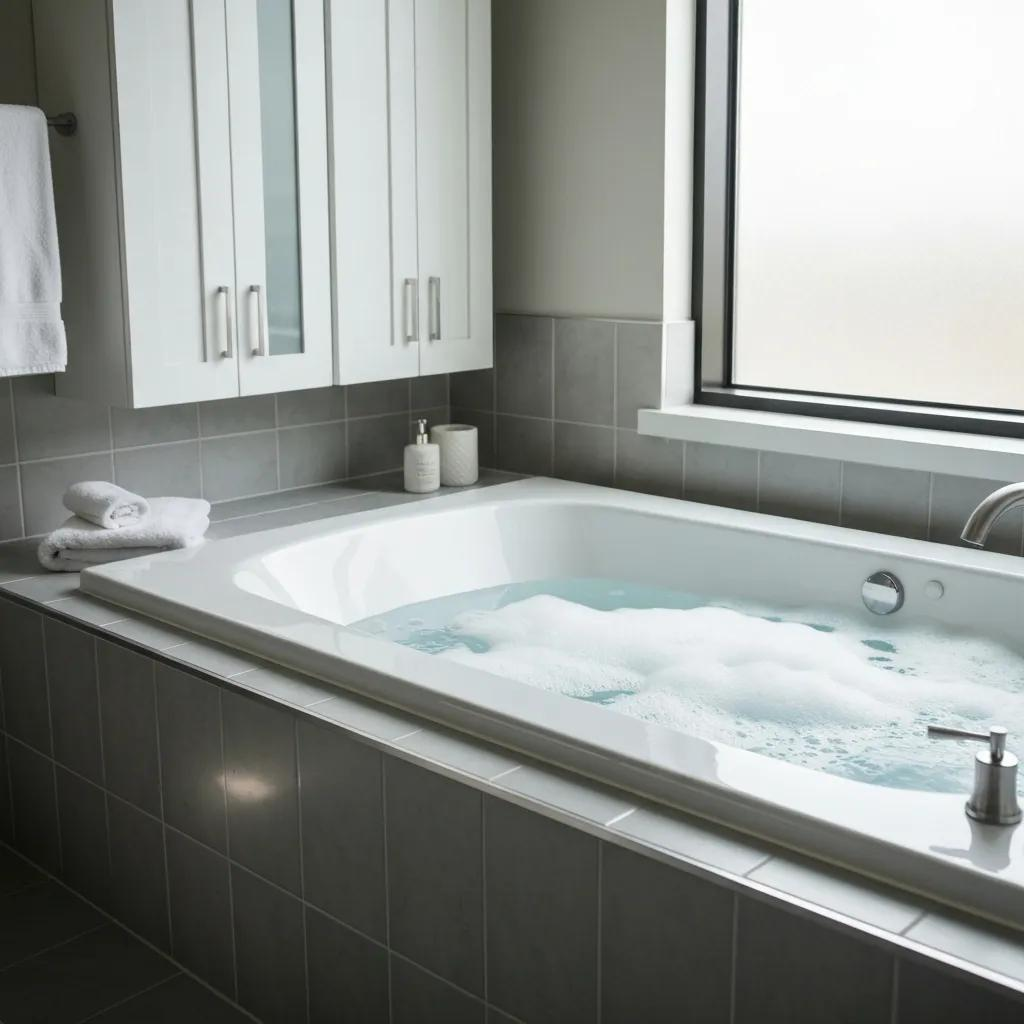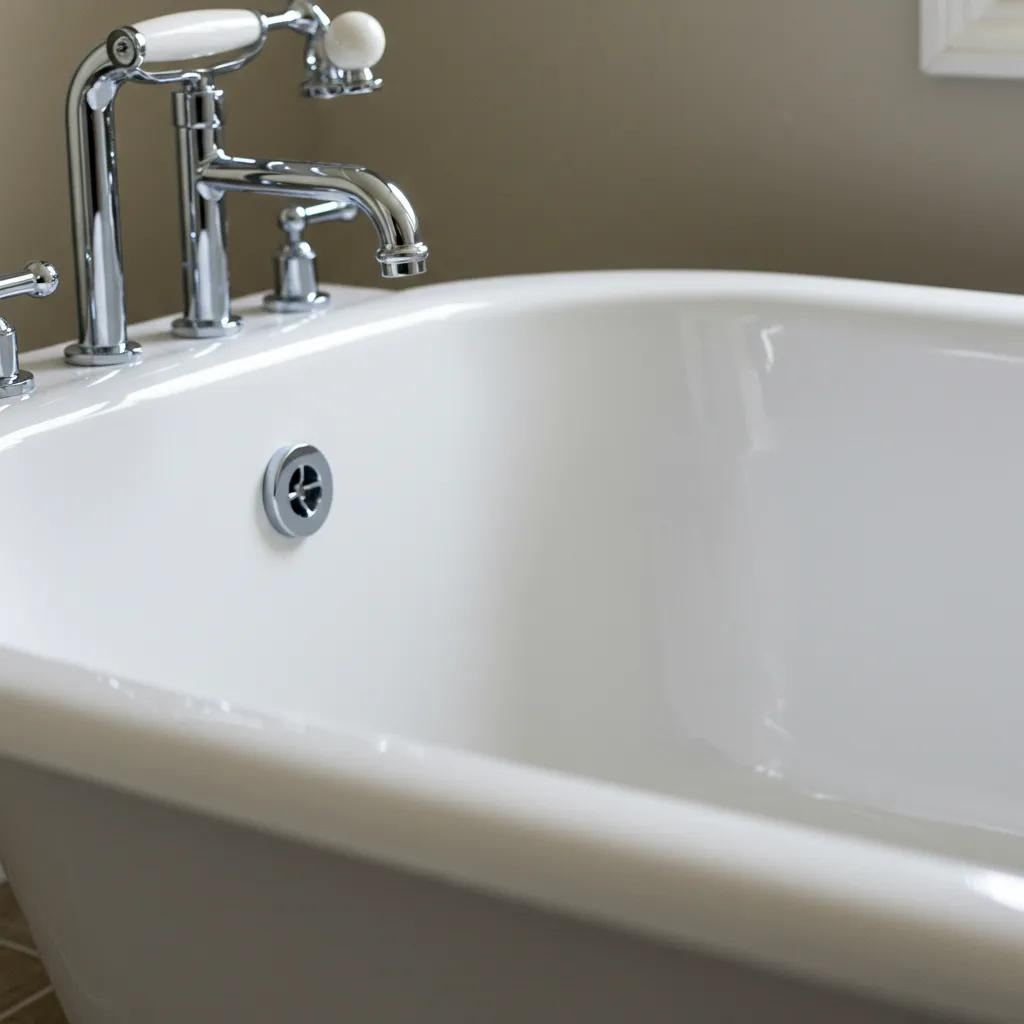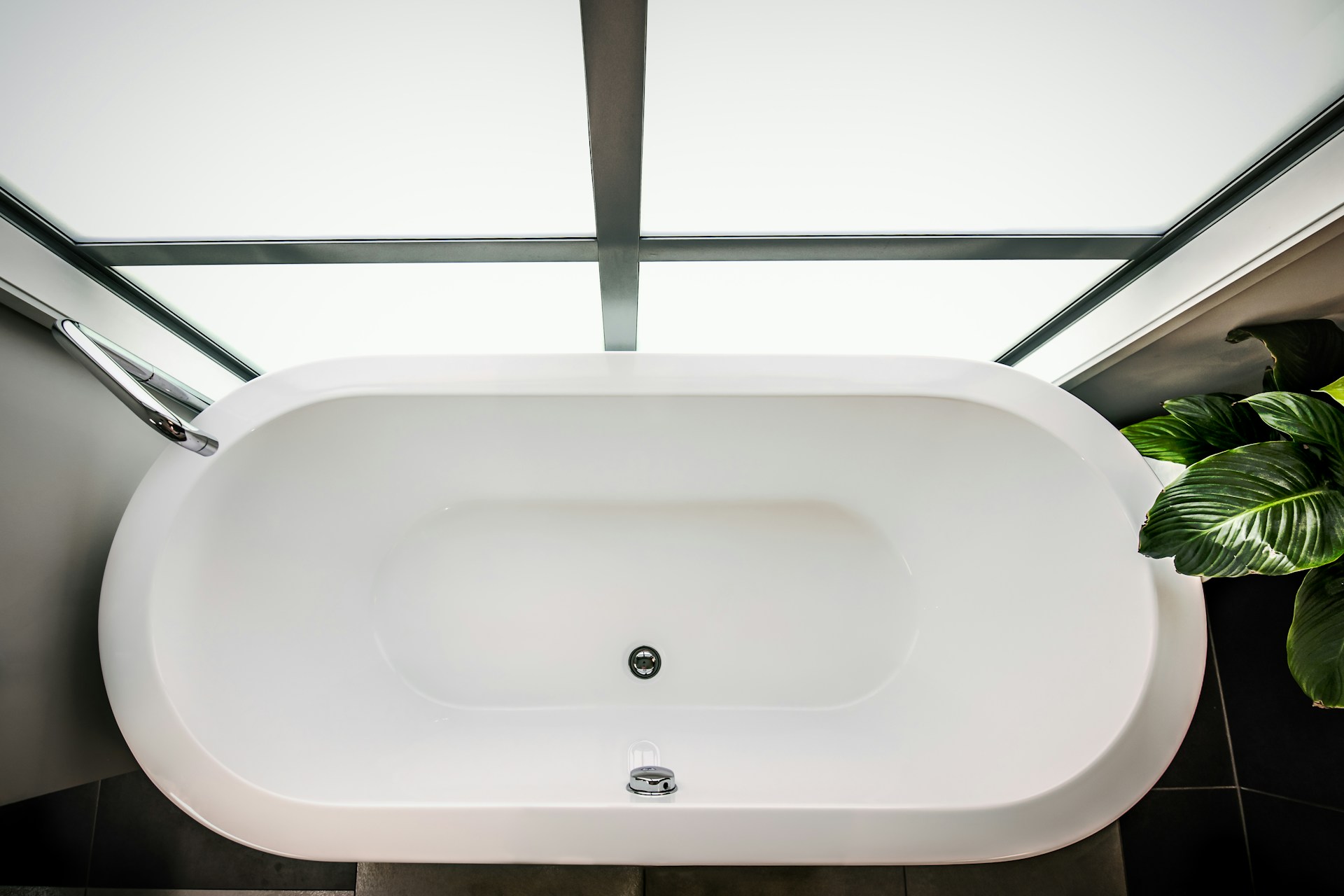How to Care for a Reglazed Bathtub: A Simple, Practical Cleaning & Maintenance Guide

A reglazed bathtub is an existing porcelain or fiberglass tub that’s been professionally resurfaced with a durable, high‑gloss coating to restore its look and function. With the right care that renewed finish can stay smooth and shiny for years. This guide explains why regular maintenance matters, gives straightforward daily and weekly routines, lists cleaners that are safe (and those to avoid), and shows how to prevent common types of damage. You’ll find easy steps to avoid scratches, remove soap scum and hard‑water marks safely, and know when it’s time to call in a pro. If you’re in the Hudson Valley or Orange County, local experts like Hudson Tubs can help — they offer a free estimate for maintenance or repairs once you know the basics below.
Why Proper Maintenance Matters for Your Reglazed Tub
Routine care keeps the reglazed coating working as a moisture barrier and keeps the finish looking its best. Gentle, regular cleaning removes soap film and mineral deposits before they etch or dull the surface. Small habit changes — like avoiding abrasive scrubbing and fixing leaks quickly — protect adhesion and shine. The practical payoff is fewer touch‑ups, delayed replacement or full refinishing, and a consistently “like‑new” appearance. Good maintenance can also help if you need to make a warranty claim or want to preserve resale value. Read on for the simple daily and weekly steps that make a real difference.
When you follow basic care routines, the surface resists wear and makes it easier to spot when professional attention is needed.
How Maintenance Helps a Reglazed Tub Last Longer
Proper care slows the main causes of finish failure: mechanical abrasion, chemical damage, and under‑surface water intrusion. Abrasion happens from rough scrubbing or sliding objects, which creates micro‑scratches and dulls gloss. Harsh cleaners or extreme pH break down the coating chemically. Leaks or standing water can get under the finish and weaken adhesion. Use soft tools, pH‑neutral cleaners, and address leaks promptly to prevent those problems. Catching small blemishes early lets you do targeted touch‑ups before peeling or flaking develops into a larger repair.
Cutting down on abrasion and harsh chemicals lowers how often you’ll need fixes — a real long‑term saving.
How Proper Care Saves You Money
Regular maintenance defers costly outcomes like full replacement or frequent major repairs. Reglazing combined with steady upkeep is usually far less expensive than installing a new tub and tile. Small touch‑ups cost less than full refinishing, and fewer replacements also mean less disruption and waste. While exact savings vary, homeowners who stick to the right care routine typically extend the reglaze’s useful life by several years, reducing the overall cost per year of ownership.
Because maintenance slows deterioration, the next section lays out simple daily and weekly routines to keep your reglaze looking and performing well.
Daily and Weekly Cleaning Routine for Reglazed Bathtubs

A short daily habit prevents soap scum and mineral buildup, and a measured weekly clean takes care of lingering deposits without risking the coating. Daily care should be quick and gentle: rinse, mild soap, soft cloth, and dry. Weekly cleaning uses a non‑abrasive product and light scrubbing to lift soap film and hard‑water spots — let cleaners sit a few minutes, then rinse thoroughly. The right tools and a simple routine reduce abrasive contact and make it easier to spot chips or dull areas early.
Use this checklist as your practical daily/weekly plan.
- Rinse the tub with warm water after each use to wash away loose soap, hair, and residue.
- Put a drop of mild dish soap on a soft microfiber cloth and gently wipe the surface.
- Rinse well to remove all soap, then dry with a soft towel to avoid water spots.
- Once a week, inspect the tub for dull areas, chips, or mineral buildup that may need deeper cleaning.
These short steps prevent residue from bonding to the surface and make deeper cleaning easier when it’s time.
Below is a quick reference table that shows tools and estimated time for each routine step.
This table gives a realistic, repeatable schedule and the basic tools to keep on hand.
How to Do a Safe Daily Wipe‑Down
Start by rinsing away loose debris with warm water. Use a diluted mild dish soap only if residue remains. Apply soap with a soft microfiber cloth or non‑scratch sponge and wipe gently in circular motions to lift films without abrading the finish. Rinse completely — leftover soap can dull the surface — and dry immediately with a clean, soft towel to prevent mineral rings. Keep this routine short so it’s easy to do after every use, and glance for tiny chips or dull spots that may need more attention.
Consistent daily care keeps the gloss and reduces how often you’ll need stronger cleaning methods.
Recommended Weekly Deep Clean Steps
For weekly cleaning, choose a liquid, pH‑neutral or mildly acidic non‑abrasive cleaner. Apply it and allow a short dwell time (a few minutes) so deposits loosen, then agitate gently with a soft sponge or microfiber pad, concentrating on rings and grout lines. Rinse with warm water and dry with a soft towel to remove any remaining mineral traces. For stubborn hard‑water spots use a diluted white vinegar rinse or a manufacturer‑recommended non‑acid mineral remover sparingly — always test in an inconspicuous spot first.
This routine reduces long‑term wear and makes stain removal less invasive to the reglaze.
Which Cleaners Work — and Which Ones to Avoid
Choosing the right cleaner matters. Liquid, non‑abrasive, pH‑neutral products clean without damaging the coating. Avoid abrasive powders, strong acids, strong alkalis, and solvent‑based products that can strip or weaken the finish. Safe options include mild dish soap and purpose‑made non‑abrasive tub cleaners labeled safe for refinished surfaces. Below is a quick comparison to help you choose.
Best Non‑Abrasive Cleaners for Reglazed Tubs
Choose liquid, pH‑neutral cleaners that dissolve soap scum and oils without mechanical abrasion. Gentle, purpose‑made tub cleaners and mild dish soap used with microfiber cloths or non‑scratch sponges lift soils safely. For spot treatments, pick products labeled safe for refinished surfaces or do a small test patch first. Soft tools — microfiber towels, soft sponges, and a soft‑bristled toothbrush for grout — let you clean effectively without scratching the reglaze.
The right cleaner and soft tools preserve the coating and reduce the chance of micro‑scratching that causes dullness.
Cleaning Products and Chemicals to Avoid
Steer clear of abrasive powders, metal scouring pads, concentrated bleach, oven cleaners, and solvent‑based degreasers. These either grind away the finish or chemically attack the coating’s polymers. Abrasives leave cumulative micro‑scratches that trap dirt and dull gloss, while strong oxidizers or acids/alkalis can thin and weaken the protective layer, leading to peeling. Suction cup cleaners and undiluted acidic descalers can also harm the surface. If a heavy‑duty cleaner seems necessary, get a professional opinion first to avoid making the problem worse.
Knowing which products are harmful helps you pick safer alternatives that work without degrading the reglaze.
How to Prevent Common Damage to a Reglazed Tub
Prevention centers on three things: minimize mechanical impacts and abrasives, limit chemical exposure, and control moisture and leaks. Simple habits — lift heavy items instead of sliding them, use soft‑bottomed mats, and choose breathable non‑slip options — cut down on friction and impacts. Check plumbing and repair leaks quickly to stop water from getting under the finish. Together, these measures lower the risk of chips, scratches, and premature finish failure.
Prevention pairs naturally with daily and weekly care; the next sections give specific tips for avoiding common problems and explain why some bath accessories do more harm than good.
Avoiding Scratches, Chips, and Dulling
Don’t place metal objects directly on the tub and lift bulky items instead of dragging them to avoid gouges and chips. Use only soft cleaning tools — microfiber cloths, non‑scratch sponges, and soft brushes — and avoid metal scrapers. If you spot small chips, stop aggressive cleaning and arrange a professional touch‑up that matches the reglaze rather than trying harsh DIY fixes. Regular inspection while cleaning helps you catch damage early before it spreads.
Less mechanical contact and the right tools preserve gloss and postpone professional repair or full refinishing.
Why Suction Cup Mats Can Harm Reglazed Surfaces
Suction cup mats trap moisture and concentrate pressure in small areas, which can lead to staining and localized finish breakdown. The edges of suction cups can rub the finish during use, causing abrasion that dulls or chips the coating. Safer alternatives include non‑slip rubber‑backed mats that spread pressure or adhesive‑back grips rated safe for refinished tubs — always spot‑test first. Remove mats regularly to clean and dry the tub underneath to prevent trapped moisture and premature damage.
Choosing low‑contact, breathable anti‑slip options reduces micro‑abrasion and moisture entrapment that speed up deterioration.
When to Call a Professional for Maintenance or Repairs
Call a pro when visible signs show the coating’s integrity is failing or the damage is beyond safe DIY repair. Look for peeling or flaking that exposes the substrate, deep chips or structural cracks, or widespread adhesion failure — those typically require professional touch‑ups or re‑refinishing. Persistent discoloration or stains that won’t come out with safe cleaners can also point to deeper coating problems. If you’re unsure, stop using aggressive products and get a professional assessment to avoid making the issue worse.
Hudson Tubs serves homeowners across the Hudson Valley and offers professional reglazing maintenance and repair, including a free estimate to evaluate visible damage and recommend the best next steps. A local specialist can diagnose the issue correctly and perform repairs that protect warranty coverage and extend the tub’s life.
Frequently Asked Questions
What should I do if my reglazed bathtub starts to peel or flake?
If you notice peeling or flaking, stop using abrasive cleaners and avoid DIY fixes that can make it worse. These signs mean the coating’s adhesion is compromised and need a professional assessment. A qualified technician can recommend a touch‑up or re‑refinishing to restore protection and appearance.
How often should I schedule professional maintenance for my reglazed tub?
How often depends on use and visible wear. As a guideline, have a professional inspection at least once a year or sooner if you see signs of damage. Heavier use may call for more frequent checkups. Regular maintenance helps catch problems early and prolong the reglaze.
Can I use vinegar to clean my reglazed bathtub?
You can use diluted vinegar for mineral deposits, but test it in a small, out‑of‑sight area first and rinse thoroughly. Vinegar is useful in moderation; for regular cleaning stick with pH‑neutral, non‑abrasive products made for refinished surfaces.
What are the best practices for drying my reglazed bathtub after cleaning?
After cleaning, dry the surface with a soft microfiber towel to prevent water spots and mineral buildup. Remove wet sponges or cloths promptly so moisture doesn’t sit on the finish. Drying keeps the gloss and reduces water‑related issues.
How can I tell if my cleaning routine is effective for my reglazed tub?
An effective routine leaves the tub shiny and free of soap scum, mineral rings, and dullness. Check the surface regularly while cleaning for stubborn stains or wear. If problems persist despite proper routine, reassess your products or consult a professional for advice.
What should I do if I accidentally scratch my reglazed bathtub?
For small scratches, a touch‑up kit made for reglazed surfaces may help — follow the manufacturer’s instructions. For deep or extensive scratches, contact a professional to evaluate repair options. Early action usually limits damage and cost.
Conclusion
Taking a few minutes each day and a bit more time each week keeps a reglazed bathtub looking great and working well for years. Use soft tools, non‑abrasive cleaners, and simple prevention steps, and call a trusted local professional like Hudson Tubs when you notice peeling, deep chips, or stubborn staining. Start protecting your investment today — Contact us to get personalized advice and a plan that works for your tub.

Other Blogs
Customer Testimonials
Hear what customers are saying about our professional refinishing and outstanding results.

Can’t say enough about Maurice. From start to finish great communication his work is incredible and he stands by it very competitive pricing just all-around good guy the work was done quick and kept very clean and our brand new bathroom

We had a large piece of bathtub glaze chip off. Maurice came in and did a fantastic job. It now looks and works better than before. He went above and beyond the contract by cleaning up the old chipped grout between the tub and the tiles and replacing with brand new.

Maurice did a great job on my tub. It looks brand new.








